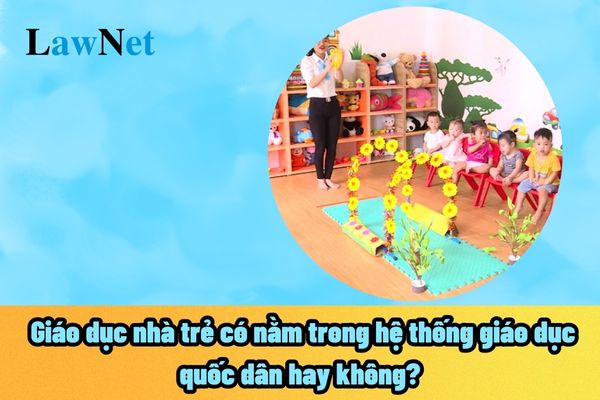Vietnam: Is junior kindergarten center a part of the national education system?
Is junior kindergarten center a part of the national education system?
Pursuant to Article 26 of the Law on Education 2019 of Vietnam:
Institutions of preschool education
Institutions of preschool education include:
1. Junior kindergarten centers and classes for children aged 03 – 36 months;
2. Senior kindergartens and independent senior kindergarten classes for children aged 03 – 06 years;
3. Combined kindergartens and independent preschool classes for children aged 03 months – 06 years.
Preschool educational establishments, also known as preschools, involve a combination of nurseries and independent child groups, which will receive children from 03 months old to 03 years old.
Additionally, based on point a, clause 2, Article 6 of the Law on Education 2019, it is prescribed:
The national educational system
...
2. Educational levels and training qualifications of the national educational system include:
a) Preschool education including junior kindergartens (for children aged 03 – 36 months) and senior kindergartens (for children aged 3 – 5 years);
Thus, nursery education falls under the national education system.

Is junior kindergarten center a part of the national education system? How will nursery education organize job positions? (Image from the Internet)
How will nursery schools organize job positions?
According to Appendix 2 Contents of educational sector statistics, issued together with Circular 03/2024/TT-BGDDT of the Ministry of Education and Training of Vietnam, which regulates the number of management staff, teachers, and other job positions in nursery schools as follows:
- Management staff includes principals and vice principals at nursery schools.
- Nursery school teachers are responsible for nurturing, caring for, and educating children in nursery schools, child groups in preschools, independent child groups, and other educational establishments.
- Teachers meeting standard training levels are those with a college degree in early childhood education or preschool education.
- Teachers exceeding the standard training levels are those with a bachelor's degree in early childhood education or higher.
- Untrained teachers are those directly involved in child care but have not attended formal pedagogical training.
- Specialized job positions include teachers, support staff for disabled children.
- Professional job titles for preschool teachers meet standards related to education level, professional competence, ethics, etc., and are appointed according to current regulations (rank, code).
- General professional job positions include clerks, accountants, cashiers, librarians.
- Support and service job positions include school healthcare staff, security personnel, service staff, and cooks.
How are child groups within nursery schools classified?
Pursuant to Appendix 2 Contents of educational sector statistics, issued together with Circular 03/2024/TT-BGDDT, child groups are regulated as follows:
- Child groups consist of children from 03 months old to 36 months old, organized into age groups from 03 to 12 months old; from 13 to 24 months old; from 25 to 36 months old.
- The maximum number of children in a group is regulated as follows:
+ Group from 03 to 12 months old: 15 children;
+ Group from 13 to 24 months old: 20 children;
+ Group from 25 to 36 months old: 25 children.
When a group includes 01 (one) disabled child integrated for learning, the group size decreases by 05 (five) children. Each group cannot have more than 02 (two) disabled children.
- Child groups include groups in nursery schools, preschools, independent child groups, independent preschool classes, and other educational establishments.
- When the number of children in each group is less than 50% compared to the maximum, they can be organized into a combined group with no more than 20 children.
- Independent child groups are those in areas lacking conditions to establish schools but have an operation license.
Independent child groups belong to public and private sectors, invested in by individuals or communities for material facilities and ensuring operational conditions.
Independent child groups operate under Circular 49/2021/TT-BGDDT issued by the Minister of Education and Training, regulating the organization and operation of independent child groups, independent kindergarten classes, and independent preschool classes in the public and private sectors.
Thus, according to the above regulation, child groups in nursery schools are classified from 03 months to 36 months old.
The maximum number of children in a group is 15 children from 03 to 12 months old, 20 children from 13 to 24 months old, and 25 children from 25 to 36 months old.
How many types of classrooms are there in nursery schools?
According to Appendix 2 Contents of educational sector statistics, issued together with Circular 03/2024/TT-BGDĐT which stipulates the number of nursery classrooms as follows:
- Nursery classrooms include rooms for nurturing, caring for, and educating children aged 03 months to 36 months in nursery schools, independent child groups, and preschools.
Thus, according to the regulation, nursery schools must have 3 types of rooms for nurturing, caring for, and educating children of nursery age.

